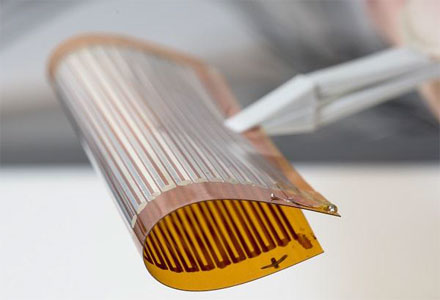The University of Southampton and Plasma App Ltd. are collaborating on a one-year, £150k feasibility study to explore novel thin film coating technology and applications. The project collaborators intend to produce well-characterized samples of a range of novel Gallium, Lanthanum and Sulphur (GLS)-based optics for dissemination to members of the Chalcogenide Advanced Manufacturing Partnership. The wider community of chalcogenide glass users, especially those pursuing optical applications for aerospace, defense and IR imaging, will also use them.
GLS chalcogenide glasses are difficult to deposit as thick films using thermal techniques due to their complex chemistry, high melting points and electrical insulating properties. Plasma App's novel Virtual Cathode Deposition (VCD) technique uses pulsed beams of electrons to break up the GLS target material and deposit it as a thin film. Plasma App has demonstrated deposition rates of > 0.2 µ per min of GLS glass onto a substrate at room temperature — a rate that is more than 10,000 times faster than conventional deposition by RF sputtering.

A thermoelectric generator formed from doped chalcogenide materials on a flexible substrate. Courtesy of University of Southampton.
"This project provides a clear roadmap to increase the uptake of GLS glass into new technology areas that were previously considered difficult to access," said Dmitry Yarmolich, Plasma App CEO.
"We want to be able to give end users of IR optics a safe, robust and high performance alternative to arsenic-based glasses and a faster, more accurate deposition method," said professor Dan Hewak of the Optoelectronics Research Center.
The project is co-funded by Innovate UK and the Engineering and Physical Sciences Research Council (EPSRC).